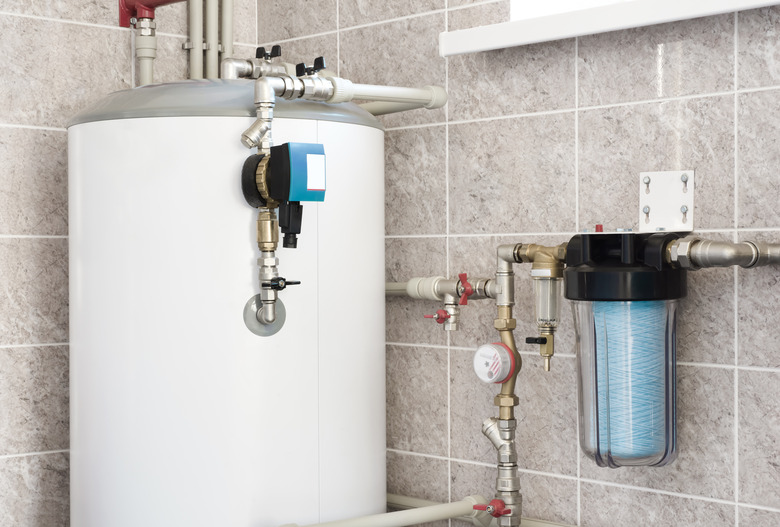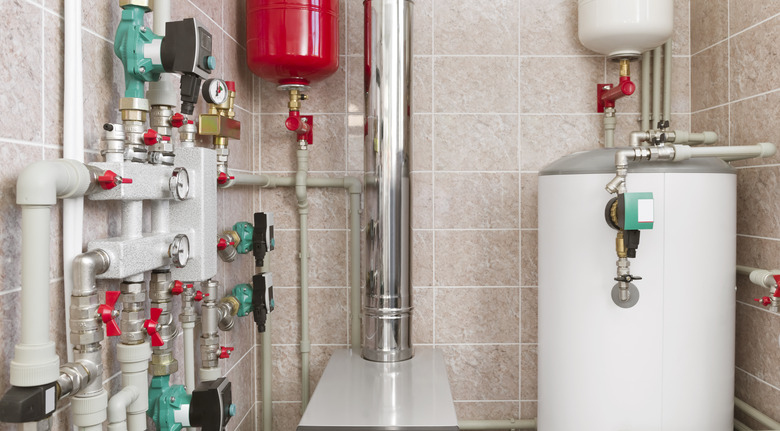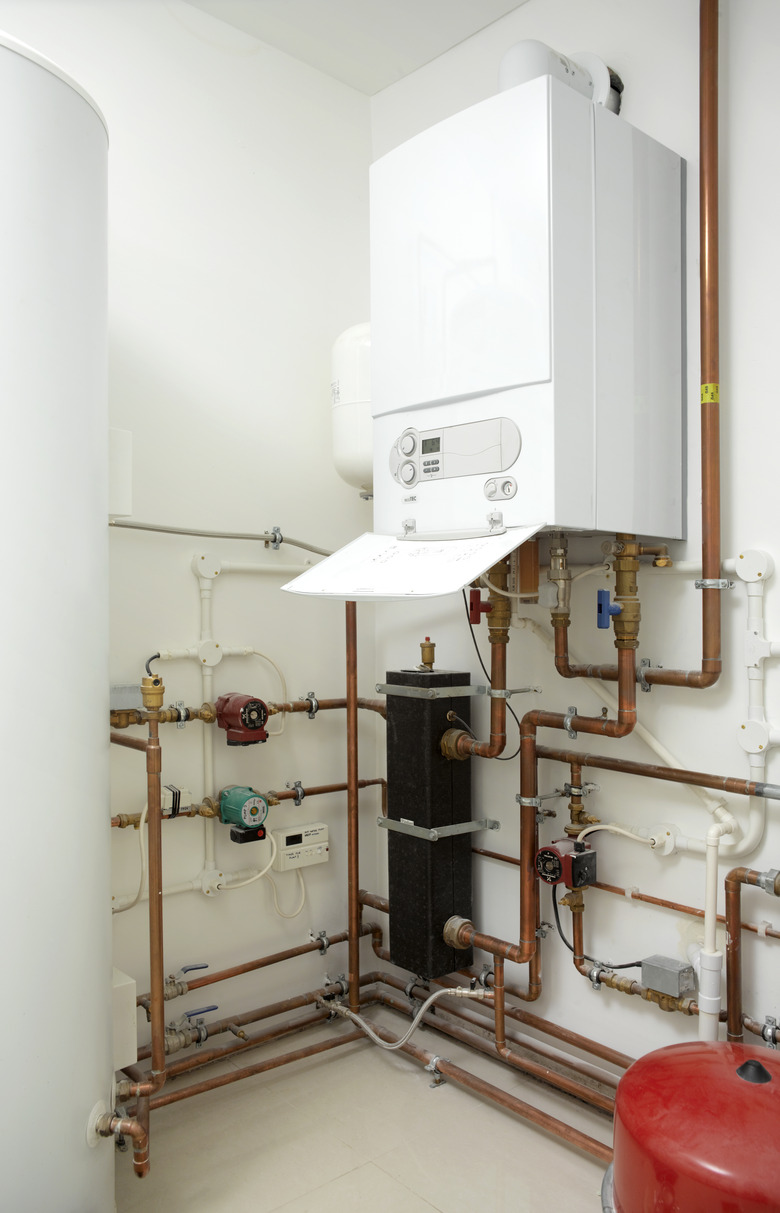Home Heating: Understanding Hot Water Boiler Systems
We may receive a commission on purchases made from links.
Boiler systems for whole-house heating are more common in older homes than they are in modern ones — mostly because central heating systems that include cooling and ventilation have largely replaced them. However, boiler heating systems, also known as hydronic heating systems, offer advantages over forced-air systems that are worth considering even if you're building a new house. And if you're moving into an older house that already has radiators or baseboard heaters, you should take a moment to appreciate the benefits of hydronic heat. You should also learn how your hydronic heating system works so you can get the most from it and know what to do in case things aren't working.
How Boiler Systems Work
How Boiler Systems Work
Many older boiler heating systems are gravity systems and rely on the fact that steam naturally rises to the highest point in the system. Contemporary systems, on the other hand, circulate hot water through the pipes at a temperature between 180 and 190 degrees Fahrenheit, which reduces the amount of energy needed to heat the water but requires the addition of a circulation pump. Whether it's old or new, boiler systems are closed systems in which water or steam continuously cycles through the heating elements and back to the boiler, and they are more energy efficient and easier to maintain than forced-air systems.
The heart of the system is the boiler, a name from the days when most boilers actually boiled water. Like the steam tanks of yore, many modern boilers are made of cast iron (though many aren't), but even though they circulate water instead of air, they operate almost exactly like furnaces. A fuel — which can be natural gas, propane, oil or electricity — produces heat, which is transferred to the water by a heat exchanger, and a pump circulates the heated water throughout the system. The water transfers heat to the elements in each of the individual heaters placed throughout the house and returns to the boiler to be reheated. That's about it — boiler systems are the essence of simplicity.
Because water expands when it's heated, a boiler system needs an expansion tank, usually located near the boiler, to act as a reservoir and to prevent overpressurization of the system. If the boiler burns a fuel, it also needs a flue to exhaust combustion gases. To increase energy efficiency, boiler systems can be fitted with zone valves to allow the system to selectively heat certain parts of the house and not others. Each valve typically has its own thermostat, and by adjusting it, homeowners can heat a bedroom while leaving the rest of the house at a cooler temperature.
How Efficient Are Boiler Systems?
How Efficient Are Boiler Systems?
The efficiency of boilers, like that of furnaces, is measured by the annual fuel utilization efficiency (AFUE) rating system, and the Federal Trade Commission requires each boiler to have a label displaying its AFUE rating. The minimum allowable rating depends on the fuel type and whether the heating system runs on steam or hot water.
Gas-fired hot water boilers must have a minimum AFUE rating of 82 percent, while for gas-fired steam boilers, the minimum is 80 percent. For an oil-fired boiler, these ratings are 84 percent for hot water and 82 percent for steam. To earn the ENERGY STAR label, oil boilers must have an AFUE rating of at least 87 percent, while the minimum for gas boilers is 90 percent. Condensing boilers are required to have an AFUE rating of at least 88 percent, and some have ratings much higher than the minimum.
Condensing boilers, like condensing furnaces, have sealed combustion chambers and condense the combustion gases to draw out the maximum amount of heat. These high-efficiency boilers have PVC exhaust vents that can't be corroded by the cool, acidic exhaust gases, whereas conventional combustion boilers have galvanized steel flues to exhaust the gases, which are still hot. Electric boilers don't burn fuel, so they don't have exhaust vents. On paper, they are the most efficient of all, although they cost more to operate, owing to the higher cost of electricity. Also, this efficiency does not take into account the significant amount of energy required to generate the electricity at a conventional power plant.
Heating Elements for Boiler Systems
Heating Elements for Boiler Systems
Hydronic heat is radiant heat and rises by natural convection from the heating elements, which are typically placed in or near the floor. This type of heat warms the objects in its path rather than just the air, allowing for even, more comfortable heating throughout the room. The three types of heating elements you can use in a hydronic heating system are radiators, baseboard heaters and in-floor heating pipes.
The radiators in modern hydronic systems are shaped like the cast-iron ones found in older houses with boiler systems, but they are made of lightweight metal and are smaller, though they radiate just as much heat. They can do this because the internal piping is more complex and better designed, allowing heat from the water or steam to contact more of the metal. The heating elements found in most baseboard heaters consist of multiple metal fins attached to the main water pipe. Each fin radiates heat, and their sheer number greatly increases the amount of heat the element delivers.
Although all hydronic heating elements radiate heat, when HVAC technicians talk about radiant heat, they are usually referring to in-floor heating elements. These are heat-conducting pipes, usually copper but sometimes PEX, that are typically installed while the house is being constructed so they can be buried under the flooring. It's possible to retrofit an existing wood floor with radiant heat pipes by removing the floor covering and installing the pipes between the joists. It's even possible to install them from below the floor by hanging them on the underside of the floor joists, which makes removal of the floor covering unnecessary.
Ways to Improve Efficiency of a Boiler System
Ways to Improve Efficiency of a Boiler System
Just as you can with any heating system, you can improve efficiency by sealing gaps in the walls, ceiling and floor, adding more insulation to your house and installing energy-efficient doors and windows. You might consider hiring a contractor to do an energy audit to identify small gaps that need attention. The contractor will use a blower to create a small amount of negative pressure in the house, which makes it easy to find gaps since air will be blowing through them.
Another method to improve the efficiency of boiler systems is to install an outdoor reset controller on the side of the house. This is supplied with most new boiler systems, but if you're moving into a house with an existing system, the outdoor reset may never have been installed. This device monitors the outdoor temperature and lowers the water temperature when it's warm out and less indoor heat is needed. It costs about $400 to install one, and it quickly pays for itself in energy savings.
You can also save energy by widening your thermostat's deadband or installing a setback thermostat, which has deadband capability. The deadband is a range of temperatures on either side of the room's target temperature in which the boiler stays off. For example, if the target temperature is 70 degrees and the deadband is ± 2 degrees, the thermostat will let the temperature drop to 68 degrees before switching on the boiler. If you widen the deadband to ± 5 degrees, the system will allow the temperature to fall to 65 degrees, which is somewhat cooler but still comfortable for most people. If your current thermostat isn't adjustable in this way, consider replacing it with one that is.
Benefits of Hydronic Heating Systems
Benefits of Hydronic Heating Systems
Besides providing more comfortable and even heat, boiler systems offer a number of other benefits, not the least of which is that boilers can double as water heaters and can help to heat water (often in conjunction with a water heater) for use in the bathroom and kitchen as well as for the heating system. Whether or not you design your system to do that, you won't have to go to the expense of installing ductwork, which is difficult and even more expensive to do if your house doesn't have room for ducts. Other things to like include:
- No blower: A hydronic system doesn't need a blower, so there's no noise and less chance of circulating allergens and other pollutants through the house because you forgot to change the filters. A typical blower consumes about 400 watts of electricity per hour and costs from $1.00 to $1.50 per day to operate, while a hydronic circulation pump draws from 100 to 200 watts and costs half as much.
- Little effect on humidity: Unlike a forced-air heating system, a hydronic system does not create brisk air currents that suck humidity out of the room. In fact, a hydronic heating system has a negligible effect on room humidity and air quality in general.
- No air pressure issues: Because a hydronic system radiates heat instead of warming and circulating air, there are never any pockets of air that are too cold or too warm, and doors will never be hard to open because of air pressure differentials.
- Less expensive to operate: On average, hydronic heating systems cost about 20 percent less to operate than forced-air furnaces.
Some Things You May Not Like
Some Things You May Not Like
Although hydronic heating has a lot going for it, it has significant drawbacks that make it a poor choice for certain situations. One of the main drawbacks is also one of its advantages: There is no ductwork, so if the home needs an air conditioning system or a ventilation system, these must be installed independently of the heating system. Many contemporary homes are built so tightly that an air exchanger is a necessity to move stale air out of the house and replace it with fresh air, and if you're going to install ductwork for that, you might as well install a furnace. Besides this, hydronic heating systems present other problems:
- Water pipes in the walls: Any time you put plumbing pipes in the walls, there's a chance of leaks, and even a small leak can cause extensive damage to the framing, drywall and insulation not to mention allowing mold to grow. Moreover, if the home experiences a power outage in the winter, the pipes could freeze and burst.
- Long warm-up time: It can take several minutes for hydronic heating elements to get warm enough to radiate heat and several more minutes for the heat to spread throughout a room. On the other hand, the elements stay warm for several minutes after the boiler shuts off, which can be a good thing or a bad thing.
- Heating elements take up space: You have to design your room décor around the heating elements because you can't put furniture in front of one or let it be even partially covered by drapes.
- Air locks: If air gets into the water pipes, it can form bubbles that prevent the water from circulating. If the heating elements don't have bleed valves, the only way to purge the air is to drain the boiler.


